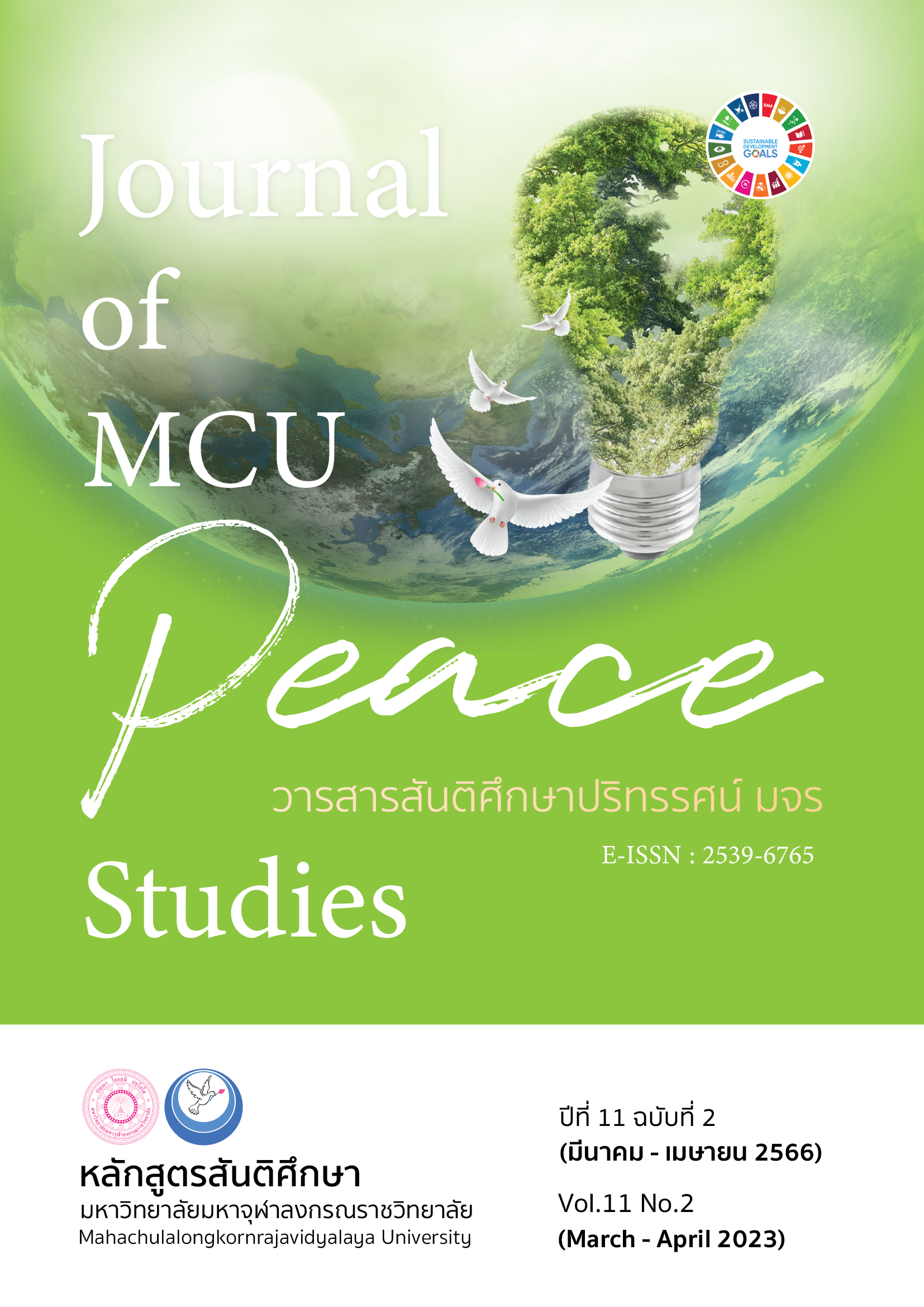การพัฒนาหลักสูตรภาวะผู้นำการเปลี่ยนแปลงด้านการบินของครูวิชาภาคพื้น สถาบันการบินพลเรือน
Main Article Content
บทคัดย่อ
บทความวิจัยนี้มีวัตถุประสงค์การวิจัย คือ 1) เพื่อพัฒนาหลักสูตรการพัฒนาภาวะผู้นำการเปลี่ยนแปลงด้านการบิน ของครูวิชาภาคพื้น สถาบันการบินพลเรือน 2) เพื่อทดลองใช้และประเมินหลักสูตร และ 3) เพื่อปรับปรุงหลักสูตร บทความวิจัยนี้เป็นการวิจัยแบบผสมผสาน กลุ่มตัวอย่างที่ใช้ในการวิจัย คือ ครูวิชาภาคพื้น จำนวน 30 คน โดยความสมัครใจ สถิติที่ใช้ในการวิเคราะห์ข้อมูล คือ ค่าเฉลี่ย ค่าความถี่ และค่าเบี่ยงเบนมาตรฐาน
ผลการวิจัยพบว่า 1. หลักสูตรการพัฒนาภาวะผู้นำการเปลี่ยนแปลงด้านการบิน ของครูวิชาภาคพื้น สถาบันการบินพลเรือน มีองค์ประกอบ 1) หลักการและเหตุผล 2) วัตถุประสงค์ 3) เนื้อหา แบ่งเป็น 2 โมดูล คือ โมดูลที่ 1 ภาวะผู้นำการเปลี่ยนแปลง ประกอบด้วย ความหมายและความสำคัญของภาวะผู้นำ และ ความเข้าใจกระบวนการการเปลี่ยนแปลง โมดูลที่ 2 การมีวิสัยทัศน์ และความคิดสร้างสรรค์ ประกอบด้วย ความหมายและความสำคัญของวิสัยทัศน์ กระบวนการการพัฒนาวิสัยทัศน์ ความหมาย และความสำคัญของความคิดสร้างสรรค์ และ กระบวนการการพัฒนาความคิดสร้างสรรค์ 4)กิจกรรม การเรียนการสอนการฝึกอบรม 5) สื่อ และ 6) การประเมินผลการใช้หลักสูตร 2. ผลการทดลอง และประเมินผลการใช้หลักสูตรการพัฒนาภาวะผู้นำการเปลี่ยนแปลงด้านการบิน ของครูวิชาภาคพื้น สถาบันการบินพลเรือน พบว่า ครูวิชาภาคพื้นมีความรู้ ความเข้าใจ และมีพฤติกรรมที่เปลี่ยนแปลงในเรื่องภาวะผู้นำการเปลี่ยนแปลงด้านการบิน โดยมีผลการประเมิน pre-post test ต่างกันอย่างมีนัยสำคัญทางสถิติที่ระดับ .05 และ 3. ผลการปรับปรุงหลักสูตรการพัฒนาภาวะผู้นำการเปลี่ยนแปลงด้านการบิน ของครูวิชาภาคพื้น สถาบันการบินพลเรือน คือ ปรับลดเนื้อหาให้สอดคล้องกับเวลาที่กำหนด
Article Details

อนุญาตภายใต้เงื่อนไข Creative Commons Attribution-NonCommercial-NoDerivatives 4.0 International License.
ทัศนะและความคิดเห็นที่ปรากฏในบทความในวารสาร ถือเป็นความรับผิดชอบของผู้เขียนบทความนั้น และไม่ถือเป็นทัศนะและความรับผิดชอบของกองบรรณาธิการ ยินยอมว่าบทความเป็นลิขสิทธิ์ของวารสาร
เอกสารอ้างอิง
Akarachan, R. (2017). A Model for Developing Creative Leadership for Primary School Teachers under the Office of the Basic Education Commission in the Upper Northeast Region. (Doctoral Dissertation). Sakon Kakhon Rajabhat University. Sakon Kakhon.
Bandura, A. (1986). Social Learning Analysis of Aggression. In E. Ribes-Inesta & A. Bandura (Eds.), Analysis of Delinquency and Aggression. Lawrence Erlbaum.
Bass, B. M. (1998). Transformational Leadership: Industrial, Military, and Educational Impact. Mahwah, NJ: Lawrence Erlbaum Associates.
Bloom, B. S. (1956). Taxonomy of Educational Objectives, Handbook the Cognitive Domain. New York: David McKay.
Civil Aviation Training Center.(2019). Annual Report 2018. Retrieved August 12, 2019, from http://www.catc.or.th/2015/attachments/article/ANNUAL_REPORT_2018.pdf
Fullan, M. (2001). The New Meaning of Educational Change. (3rd ed). New York: Teachers College Press.
Kasetsat University. (2016). Blueprint and Action Plan for Thailand 4.0, Driving Model for Thailand 4.0 Model to Bring Security, Wealth and Stability to Thailand. Retrieved March 10, 2020 from http://www.digital.forrest.ku.ac.th/TFCC/TCERN2017/PW/Thailand_4.0_PM.pdf
Kirkpatrick, D. (2009). Great Ideas Revisited. Techniques for Evaluating Training Programs. Revisiting Kirkpatrick’s Four Level Model. Training and Development, 50, 54–59.
Plangwattana, W., & Meelang, K. (2020). A Change Leadership for Aviation in the Disruptive Technology for Ground Instructor at Civil Aviation Training Center. (Research Grant Program in 2020 Academics Year). Bangkok: Civil Aviation Training Center.
Sincharoen, D., Paai, A., Koolnaphadol, Th., & Tritilanuut, V. (2013). The Development of Training Curriculum for the Promotion of Transformational Leadership for Directors of Tambol Health Promotion Hospitals. (Doctoral Dissertation). Rajabhat Rajanagarindra University. Chachoengsao.
Suarez, G., & Hirshberg, J. (1981). The Leader as a Catalyst of Change. Leadership. UK: Penguin Books.
Thanaseelangkun, Ch. (2016). The Curriculum Development of Creative Leadership Encouraging for Teacher Students. Nakhon Ratchasima Rajabhat University. Journal of Education Khon Kaen University, 39(4), 65-73.


